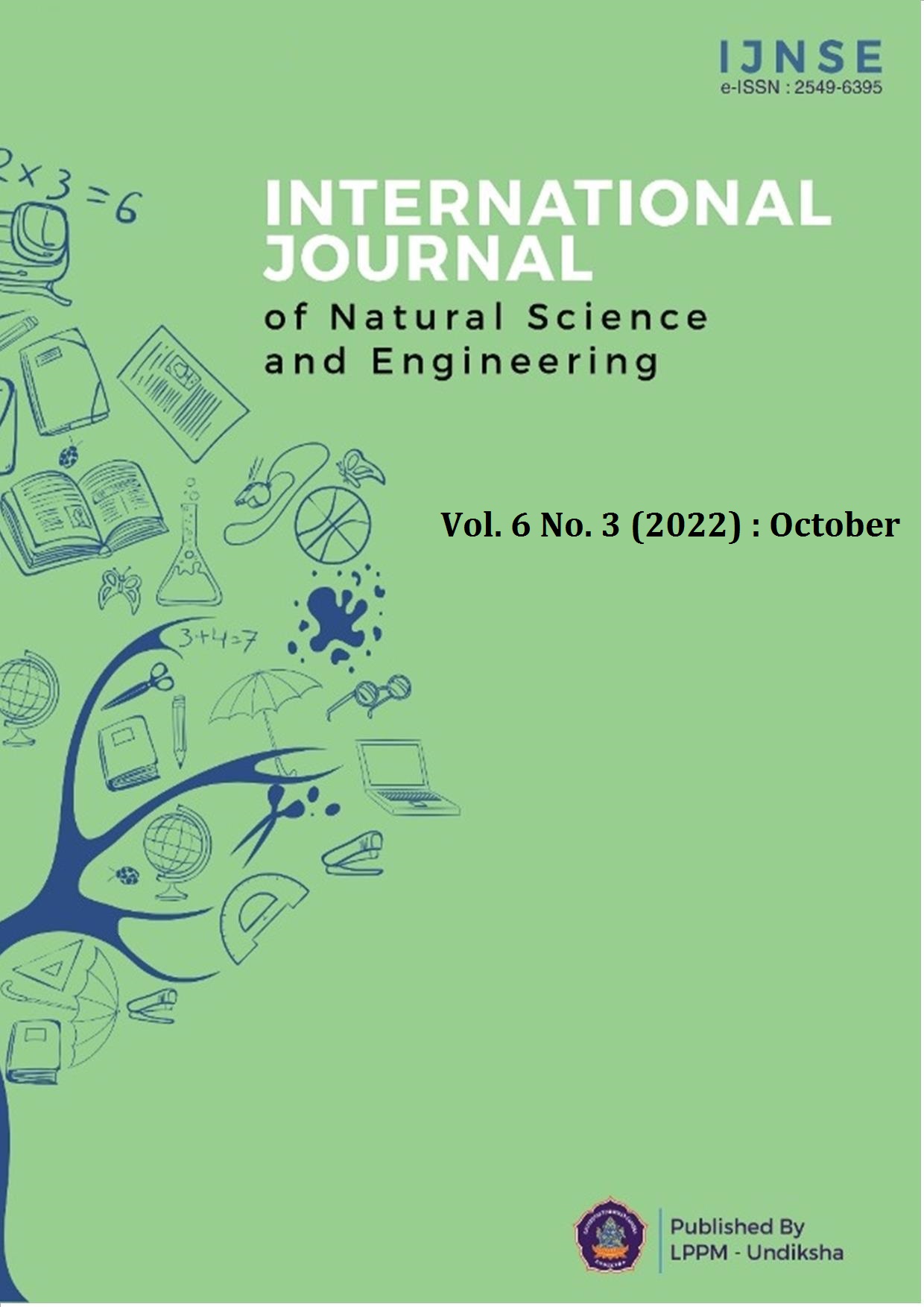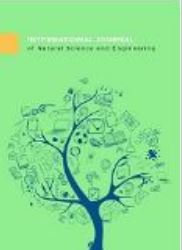Implementation of Fuzzy C-Means in Clustering Stunting Prone Areas
DOI:
https://doi.org/10.23887/ijnse.v6i3.53048Keywords:
Stunting, Clustering, Fuzzy C-Means (FCM).Abstract
Stunting is a chronic nutritional problem that occurs in toddlers, defined based on height for age (TB/U) which is less than two negative standard deviations or a toddler's height is shorter than it should be. Stunting is a chronic nutritional problem in toddlers, characterized by a shorter height than the height of children his age. Bulungan Regency is one of 160 urban regencies in Indonesia that is intervened to focus on reducing stunting. Based on these problems, this study aims to determine the cluster of stunting vulnerabilities in Bulungan Regency. The method used is Fuzzy C-Means (FCM). The results of this study are that the area in cluster 1 has a high level of vulnerability because it has the lowest level of adequacy of posyandu (active) and high incidence of LBW in infants, cluster 2 has a moderate level of vulnerability because it has an adequate level of puskesmas, adequacy of posyandu (active), the adequacy of doctors, the adequacy of nutritionists, the adequacy of midwives, the percentage of moderate LBW, and cluster 3 have a low level of vulnerability because they have a low average percentage of LBW and a high level of adequacy of posyandu (active) in the area.
References
Antunes, J. L. F., Corrêa, E. M., Gallo, C. de O., & Jaime, P. C. (2022). The tendency of stunting among children under five in the Northern Region of Brazil, according to the food and nutrition surveillance system, 2008-2017. Jornal de Pediatria. https://doi.org/g/10.1016/j.jped.2022.07.006.
Ardianti, C. R. (2019). Implementasi Metode Fuzzy C-Means Untuk Klasifikasi Status Gizi Pada Balita Berdasarkan Indeks Antropometri.
Cahyono, F., Manongga, S. P., & Picauly, I. (2016). Faktor Penentu Stunting Anak Balita Pada Berbagai Zona Ekosistem Di Kabupaten Kupang. Jurnal Gizi dan Pangan, 11(1), 9–18. https://doi.org/10.25182/jgp.2016.11.1.%25p.
Ditendra, E., Monalisa, S., Anderjovi, S., & Lesmana, S. (2020). Klasterisasi Clv Dengan Model Lrfm Menggunakan Algoritma Fuzzy C-Means (Studi Kasus: Pangeran Gym Pekanbaru). Jurnal Ilmiah Rekayasa dan Manajemen Sistem Informasi, 6(1), 109–116. https://doi.org/10.24014/RMSI.V6I1.8535. DOI: https://doi.org/10.24014/rmsi.v6i1.8535
Efiyah, U. (2014). Penerapan algoritma fuzzy C-Means untuk pengelompokan harga gabah di tingkat penggilingan berdasarkan kualitas gabah. Universitas Islam Negeri Maulana Malik Ibrahim.
Fadillah, A. W., Tejawati, A., & Puspitasari, N. (2018). Penerapan Fuzzy C-Means Pada Curah Hujan Di Kalimantan Timur. Jurnal Rekayasa Teknologi Informasi (JURTI), 2(1), 82–89. https://doi.org/10.30872/JURTI.V2I1.1426. DOI: https://doi.org/10.30872/jurti.v2i1.1426
Fonseka, R. W., McDougal, L., Raj, A., & Reed, E. (2022). Measuring the impacts of maternal child marriage and maternal intimate partner violence and the moderating effects of proximity to conflict on stunting among children under 5 in post-conflict Sri Lanka. SSM - Population Health, 18. https://doi.org/10.1016/j.ssmph.2022.101074. DOI: https://doi.org/10.1016/j.ssmph.2022.101074
Fufa, D. A. (2022). Determinants of stunting in children under five years in dibate district of Ethiopia: A case-control study. Human Nutrition & Metabolism, 30. https://doi.org/10.1016/j.hnm.2022.200162. DOI: https://doi.org/10.1016/j.hnm.2022.200162
Ghogge, R. (2014). Brain Tumour Detection Using K-means and Fuzzy C-means Clustering Algorithm. IJSETR, 3(7).
Hadi, B. S. (2017). Pendekatan Modified Particle Swarm Optimization dan Artificial Bee Colony Pada Fuzzy Geographically Weighted Clustering (Studi Kasus Pada Faktor Stunting Balita di Provinsi Jawa Timur. Institut Teknologi Sepuluh November.
Iqbal, M., & Ferdiany, F. S. (2019). Kaltara Miliki Kasus Gizi Buruk Terendah se-Kalimantan. Antara Kaltara.
Jayanti, S., & Hartati, S. (2012). Sistem Pendukung Keputusan Seleksi Anggota Paduan Suara Dewasa Menggunakan Metode Fuzzy Mamdani. IJCCS (Indonesian Journal of Computing and Cybernetics Systems), 6(1). https://doi.org/10.22146/ijccs.2141. DOI: https://doi.org/10.22146/ijccs.2141
Kemala, R. F., Astuti, I. F., & Maharani, S. (2019). Penerapan Metode Fuzzy C-Means Pada Aplikasi Simulasi TOEFL (Test Of English As A Foreign Language) Berbasis Web (Studi Kasus: Fakultas MIPA Universitas Mulawarman). Informatika Mulawarman : Jurnal Ilmiah Ilmu Komputer, 14(1), 17–20. https://doi.org/10.30872/jim.v14i1.1954. DOI: https://doi.org/10.30872/jim.v14i1.1954
Kurniawan, R., & Haqiqi, B. N. (2015). Pengelompokan Menggunakan Metode Subtractive Fuzzy C-Mean (Sfcm), Studi Kasus Demam Berdarah Di Jawa Timur. Statistika, 3(2), 22–30.
Kusuma, D. T., & Agani, N. (2015). Prototipe Komparasi Model Clustering Menggunakan Metode K-Means Dan FCM Untuk Menentukan Strategi Promosi : Study Kasus Sekolah Tinggi Teknik-PLN Jakarta. Jurnal TICOM, 3(3), 93460.
Lestari, W., Margawati, A., & Rahfiludin, Z. (2014). Faktor risiko stunting pada anak umur 6-24 bulan di kecamatan Penanggalan kota Subulussalam provinsi Aceh. Jurnal Gizi Indonesia (The Indonesian Journal of Nutrition), 3(1), 37–45. https://doi.org/10.14710/JGI.3.1.126-134. DOI: https://doi.org/10.14710/jgi.3.1.126-134
Nidyashofa, N., & Istiawan, D. (2017). Penerapan Algoritma Fuzzy C-Means untuk Pengelompokan Kabupaten / Kota di Jawa Tengah Berdasarkan Status Kesejahteraan Tahun 2015. The 6th University Research Colloquium, 23–30.
Nurjanah, & Nugroho, E. (2020). Serius Tangani Stunting, Pemkab Lakukan Aksi. Koran Kaltara.
Paintsil, J. A., Kofinti, R. E., Koomson, I., & Ameyaw, E. K. (2022). Reducing children’s malnutrition by increasing mothers’ health insurance coverage: A focus on stunting and underweight across 32 sub-Saharan African countries. Economic Modelling, 117. https://doi.org/10.1016/j.econmod.2022.106049. DOI: https://doi.org/10.1016/j.econmod.2022.106049
Praja, A., Lubis, C., & Herdiwindiati, D. E. (2017). Deteksi Penyakit Diabetes Dengan Metode Fuzzy C-Means Clustering Dan K-Means Clustering. Computatio : Journal of Computer Science and Information Systems, 1(1), 15–24. https://doi.org/10.24912/COMPUTATIO.V1I1.233. DOI: https://doi.org/10.24912/computatio.v1i1.233
Prasetyo, E. (2012). Data Mining – Konsep dan Aplikasi Menggunakan MATLAB (N. WK (red); Edisi 1). Penerbit Andi.
Priambodo, A. S., & Sony, A. (2019). Studi Komparasi Simulasi Sistem Kendali PID Pada Matlab, GNU Octave, SciLab dan Spyder. Elinvo (Electronics, Informatics, and Vocational Education), 4(2), 169–175. https://doi.org/10.21831/ELINVO.V4I2.28347. DOI: https://doi.org/10.21831/elinvo.v4i2.28347
Radja, M., Londa, M. A., & Sara, K. (2020). Penerapan Metode Logika Fuzzy dalam Evaluasi Kinerja Dosen. Matrix: Jurnal Manajemen Teknologi dan Informatika, 10(2). https://doi.org/10.31940/matrix.v10i2.1841. DOI: https://doi.org/10.31940/matrix.v10i2.1841
Selvi, B. K., & Ashwin, M. (2016). FCM : Fuzzy C-Means Clustering – A View in Different Aspects. IJSRSET, 2(1), 469–473.
Singh, K. J., Chiero, V., Kriina, M., Alee, N. T., & Chauhan, K. (2022). Identifying the trend of persistent cluster of stunting, wasting, and underweight among children under five years in northeastern states of India. Clinical Epidemiology and Global Health, 18. https://doi.org/10.1016/j.cegh.2022.101158. DOI: https://doi.org/10.1016/j.cegh.2022.101158
Supriyadi, E., & Wijayati, D. (2020). Penggunaan Scilab Untuk Memperkenalkan Kepada Siswa Smk Tentang Dasar Matematika Dalam Pemrograman Komputer. GAUSS: Jurnal Pendidikan Matematika, 03(02), 11–21. https://doi.org/10.30656/gauss.v3i2.2662.
Wardoyo, S., Nurjazuli, N., & Darundiati, Y. H. (2022). Lead exposure and stunting incidents in children aged 3–5 years in Pontianak City, West Kalimantan, Indonesia. Toxicologie Analytique et Clinique, 34(2). https://doi.org/10.1016/j.toxac.2022.02.006. DOI: https://doi.org/10.1016/j.toxac.2022.02.006
Wulandari, S., & Kurniawan, R. (2019). Pengelompokan Kabupaten/Kota Di Jawa Timur Berdasarkan Kasus Stunting Balita Menggunakan Algoritme Fuzzy Particle Swarm Optimization-Fuzzy C-Means. Jurnal Statistika, 7(1), 1–13. https://doi.org/10.26714/jsunimus.7.1.2019.%25p.





